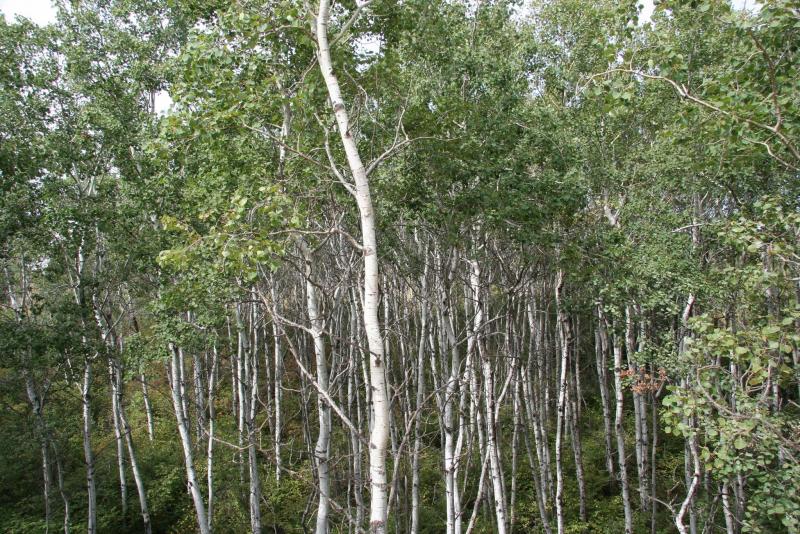For many people the aspen poplar tree is mostly a nuisance on their cottage lots. The trees have a habit of dying, seemingly without cause. If I were to tell you that the oldest living tree species today anywhere on earth is the trembling aspen; would you believe me? Sounds impossible in our part of the world, but it is true — in a remote part of Utah.
The oldest known forest anywhere on earth is the Pando trembling or quaking aspen grove located in the Fishlake National Forest in Utah. The aspens in the Pando forest are estimated to be about 80,000 years old, and is considered to be the oldest natural grouping of this aspen trees anywhere in its geographic range. This unique forest is comprised of about 47,000 trees growing on more than 106 acres of forest land. What makes this forest unique is that all the trees are genetically identical, and are referred to as a forest clone. Each tree in this clone is connected to one another by an underground network of roots which are able to resist the effects of wild fires. Until this unique stand of aspens was discovered, it was believe that the California redwoods and giant sequoias were the oldest trees in North America.
Aspen roots can live almost perpetually. If a forest fire burns portions of an aspen forest, most of the fire damaged trees have an ability to regrow from their underground roots. Throughout North America, trembling aspens are known to be one of the first colonizing tree species to appear on the landscape after fires or floods have killed off the original forest cover.
Trembling aspen is the most common tree in North and Central America. It extends from Alaska and Northwest Territories eastward across northern Canada to Newfoundland and Labrador, and extends south through the United States to central Mexico. No other tree species has such a broad habitat range in this hemisphere.
Younger trembling aspens were known to aboriginal peoples for many purposes especially for medicinal purposes and food preparation. One trait about these trees of which few people are aware is the usefulness of the white waxy powder on the bark of younger trees especially. The powder can be used as a sun screen when wiped onto the skin. The powder has a protective function for young aspens especially as it can protect the thin bark from the heating effects of the sun.
There is a good reason why so many cottagers in Manitoba and indeed across Canada are upset with aspen poplars. The trees or their branches tend to blow down during wind storms. The core wood of aspens is subject to a great deal of decay causing the unexpected breakage of tree trunks often damaging buildings and cars. The problems with aspen poplars relate to their relatively short life span typically brought about by internal fungal diseases. No other indigenous tree species is so heavily infected with serious tree diseases in Canada. I have come across three kinds of serious fungal diseases in Manitoba aspens which are fully described in my book on tree diseases. Hypoxylon canker disease seems to be the most common. The disease is especially common on Swedish aspens. There are no known cures for the aspen diseases. The short life spans of aspens is directly related to their susceptibility to the killing effects of fungal canker diseases.
Not everything is doom and gloom about aspens. On the plus side, aspen trees’ ability to colonize vacant fields using their amazing root systems makes these trees very beneficial in the resoration of vacant or damaged environments. I have come across a number of properties where the owners are planting aspen saplings (available from many tree nurseries) to encourage a more naturalized appearance to their properties.
As a tree species, aspens are not highly regarded by the public. Aspens are the environmental stewards that turn damaged landscapes into future forests. We hve much to thank them for their unique roll in our landscapes.
Michael Allen M.Sc.F., RPF (ret’d) is a consulting urban forester, tree diagnostician and certified arborist. He owns Viburnum Tree Experts. He makes house and garden visits, diagnoses problematic and hazardous trees. He can be reached at 204-831-6503 or 204-223-7709, or at viburnumtrees@shaw.ca His web site is www.treeexperts.mb.ca




